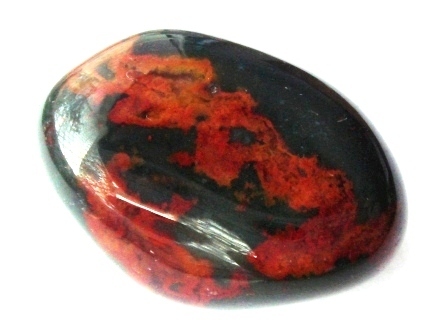Stephen Morris's Blog, page 57
March 14, 2013
“Beware the Ides of March!”
Vincenzo Camuccini, “Morte di Cesare”, 1798,
“Beware the ides of March!” the prophet warned Julius Caeser in 44 B.C. and Caeser was assassinated shortly thereafter, on the ides. Ever since, the Ides of March has been a day associated with doom, disaster, or failure in some form. But what is the “ides”?
Unlike currently used dates, which are numbered sequentially from the beginning of the month, the Romans and medieval Europeans counted backwards from three fixed points: they designated the “kalends,” the “nones,” and the “ides” and all other dates were based on these. (ex. the kalends = the 1st, the nones = the 5-7th, and the ides = the 13-15th days of the month). For instance, rather than saying, “Today is March 3″ they would say, “Today is three days before the nones of March.” The kalends marked the new moon, the nones was the half-moon and the ides was the full moon.
The ides of the month marked the full moon and thus the following days of each month were governed by the waning moon, a good time for curses as dark magic grew more powerful as the nights grew darker. Not only would dark magic grow stronger but the darker nights also made crime in general more likely. That the last half of each month was steeped in evil and disaster was underscored by its association with the assassination of Caeser.
March 11, 2013
Part 1: Wellspring eBook/Kindle Promotion
March 12th-13th-14th 2013
FREE KINDLE eBOOK PROMOTION: Come Hell or High Water, Part 1: Wellspring shows how nefarious events of the past never die and live on… http://amzn.to/VXvJTt Get it for FREE on Kindle during these three days!
March 7, 2013
Bloodstone

Bloodstone, the birthstone for March, is used as a medicine and an aphrodisiac.
Bloodstone, long considered the birthstone of March, is jasper speckled with iron oxide. (Months were assigned stones and gems from the high-priest’s breastplate of Aaron in the Old Testament or the gems described as the foundations of the New Jerusalem in the Apocalypse, the “Revelation of St. John.”)
Bloodstone was used to heal blood disorders and stop bleeding noses and wounds in Babylon and was carved into amulets to protect against the Evil Eye. Ancient Greeks thought using it in ritual would hasten changes in fortune. Western European Christians in the Middle Ages thought all bloodstones had been splashed with Christ’s blood at the crucifixion and used the stones to curve images of either the Crucifixion or scenes of martyrs’ deaths.
These gems would be pulverized and mixed into egg whites with honey and used to remove poison from snakebites. Knights and soldiers would bring bloodstones with them into battle not only to staunch bleeding but to increase courage and physical strength as well. It was also thought to confer invisibility, a useful skill in battle. It was also used as an aphrodisiac (useful after battle).
March 4, 2013
Daffodil, the flower of March

Associated with Venus and water, daffodil is used to promote love, fertility, and luck.
Daffodil or “lent lily”, one of the early blooming flowers of spring and the flower most associated with the month of March, is a common name for the blossom which is a variety of those called “Narcissus.” It was said by the ancient Greeks to have bloomed where the youth Narcissus withered and died, having become infatuated with his own reflection in a pool. (The goddess Nemesis had cursed him in retaliation for his already self-obsessed and cruel disdain of the mountain nymph Echo. Echo had already been punished by the goddess Hera who had made it impossible for Echo to say anything other than repeat a word or two that someone else had spoken to her. Greek mythology is one big interconnected soap opera, isn’t it?!)
It is associated with the goddess Venus (because of Echo’s love for Narcisscus and Narcissus’ love for himself) and is therefore a “feminine” plant. The alchemists associated daffodil with the element water (perhaps because of its association with Narcissus’ death by a pool, even though the flower itself grows easily in meadows and woods).
If you carry daffodil, it will attract a lover to you. If you place fresh-cut daffodil in your bedroom, fetility will increase. If the bloom is plucked and carried next to your heart, it will attract good luck to you. Good luck and fetility being exactly what Narcissus was himself in short supply of, perhaps his flower is attempting to make amends for him and his bad behavior toward the nymph who wanted nothing more than to be his lover.
March 1, 2013
Sequester and Treasure

Basil in your pocket or on your threshold will attract wealth and prosperity.
With the Congress debating the budget and the “sequester” and all manner of financial matters – together with the financial difficulties in much of the rest of the world as well – I thought that traditional conjurations of prosperity and wealth might be worth considering.
Burning incense made of ground allspice was one way of attracting wealth. A leaf of basil in the pocket or on the threshold will also attract wealth, as will sprigs of alfalfa in a small jar in a cupboard or pantry or an open jar of sesame seeds. Sheaves of wheat placed around the house will do this as well. Keeping buckwheat in the kitchen guards against poverty.
Treasure-hunting was one of the usual accusations made against male witches in Switzerland and the Alps mountain regions. One method of hunting for treasure involved “dowsing” with Y-shaped rods of hazel (although willow or fruit trees might also be used).
These Alpine male witches were not hunting for treasure for themselves, however. They were accused of selling their services as treasure hunters and then cheating their clients who would never come away with the anticipated treasure. It was these disaffected clients who would then bring charges of witchcraft against their guides. Treasure hunting remained popular, nevertheless. It was a sign of the fading of the great witch hunts that these accusations against the treasure-guides began to be considered “fraud” and “swindling” rather than “witchcraft” in the late 1700s.

Ground allspice, burnt as incense, will attract wealth.
February 28, 2013
Part 3: Opening Pages
PART 3: DELUGE of the Come Hell or High Water trilogy is nearing completion! I’m polishing the last 30 pages, so in the meantime I have posted the opening pages on Wattpad here. Just “click” to read the beginning and get a glimpse of the magic about to be released! Leave a comment on Wattpad when you’ve read the excerpt.
You can also read a rough draft of my story about an Estonian werewolf (metsatöll) in Prague 1890 on Wattpad here. In Estonian folklore, werewolves were the “good guys” and could fly. They would battle the weather in the sky and drive away the worst of the storms that would threaten the livilhood of their village. In this story, Alexei inherits his grandfather’s magical wolf pelt and the postion of village metsatöll but he violates the terms of the wolf-magic and terrible events follow. Please leave a comment or two on Wattpad after you read this story, as well.
February 23, 2013
Movie Magic

If you pluck the first violet of the spring, your fondest wish will be granted.
There are ways to bring success to those vying for Oscars and there are ways to predict who will win without directly influencing the outcome. Which would you rather do?
To bring success to your favorite Oscar contenders, burn cinnamon, ginger, or Winter’s Bark as an incense (holding a photo of your choice in the smoke or burning it on the charcoal with the cinnamon will direct the success more effectively). Or you can wear a sachet of clover over your right breast on behalf of your chosen actor/actress/director/writer/etc. Rowan berries and bark can be used instead of clover or simply added to the sachet.
If you would rather simply win the wager of who-will-win-what Oscar, then a prophetic dream is what you need on Saturday night or Sunday afternoon. Drinking an infusion of buchu and/or burning a fragment of Buchu with frankincense in your bedroom before sleeping will induce prophetic dreams or insights. Placing heliotrope or an onion under your pillow will do likewise — although heliotrope is most often recommended for dreams to identify a thief after a robbery. Scattering marigolds under the bed is another way to do this.
So, is everyone all set for Oscar night? Get the popcorn and settle in to watch the promenade down the red carpet! 
February 22, 2013
Cinematic Magic

Poppy blossoms attract good luck and fortune. Poppy seeds are said to grant the ability to become invisible.
Do you have a favorite actor or actress? How about a favorite movie or director? Want to give your favorite some help at the Academy Awards? What magical ways might influence the Academy’s choices on Sunday night?
One way is to carve your wish (that is, the name of the actor/actress, director, or movie) on a shard of bamboo and then bury it.
There are many herbs associated with obtaining good luck or success. Allspice or nutmeg can be burnt as incense to send luck to your movie favorites. Roses bring luck to those to whom they are sent, as can a blooming poppy. (You can also soak the poppy seeds in wine for fifteen days and drink the wine once a day for five days. If you eat nothing else during those five days, you will then have the ability to make yourself invisible!)
If the weather cooperates, you can pluck the first violet of the season to win the fulfillment of your wish.
Strawberry leaves attract luck to those who carry them in a pocket. Maybe you can send a message to your Oscar choices and suggest they put a handful of strawberry leaves in their pocket before walking down the red carpet on Sunday.
February 21, 2013
Witches on Broomsticks

The earliest known depiction of witches on broomsticks (c. 1440).
One of the most common ideas about witches is that they fly through the sky on broomsticks – although very few are known to spell out messages like “Surrender Dorothy!” as they do so. Even the students at Hogwarts learn to fly on broomsticks. The assumption is that anyone magical MUST fly around on a broomstick!
But the original reports of witches flying through the air focused more on the ointments they used than on the implements involved. Most often, the ointment was to be rubbed by the witch onto his or her own skin. Sometimes the ointment was to be rubbed on the implement the witch would straddle. These instruments were always the tools used in maintaining a fireplace, so witches would ride pokers and tongs as well as brooms. The flights were also always at night, so the Wicked Witch of the West’s smoke-written message would not have been visible in the night sky.
What was in these magical ointments that made it possible to fly? The ingredients vary from recipe to recipe but always include at least one drug that is now called “hallucinogenic” in addition to several other gruesome ingredients like human fat, so the modern theory is that the ointment caused the witch to experience flying. (If the ointment was applied directly to the skin or was first applied to the fireplace tool and then absorbed through the witch’s skin as he or she straddled the poker or tongs or broom, it would still have the same effect as the witch would typically be nude while straddling the anointed implement.)
The reports of flight would also describe the witches leaving their material bodies in bed or sitting asleep in front of the fireplace as their spiritual bodies rode the brooms and tongs through the sky. This distinction between “earthly” and “astral” bodies was vital to the accusations brought against witches at their trials. During the great witch hunts, none of the accused were thought to practice anything so tawdry as simply jumping onto a broomstick to fly away into the night. It was always the astral body which went flying and the earthly body which remained at home. (It is only in the more recent movies and television shows that witches bring their earthly bodies “along for the ride.”) So the traditional broom-lore and the modern theory of drug-induced hallucinations that would mimic flight mesh rather well.
February 19, 2013
A Great New Review on Publishers Weekly!
This review of Come Hell or High Water, Part 1: Wellspring just appeared in Publishers Weekly:
Morris generates some genuine chills and thrills in this entertaining series opener that alternates between the 14th and 21st centuries. The author gets things off to a good start with a powerful opening set in 1356 Prague, as an herbalist named Fen’ka is burned at the stake for being a witch. With her last breath, she curses her killers—”When this fire dies, let all their nightmares come to life.” Next, the action shifts to 2002, as Magdalena, who works in Charles University’s literature and folklore department, encounters Fen’ka’s ghost after receiving a warning from a fortune-teller. The author’s background in medieval history stands him in good stead in the 14th-century sections, as he slips in interesting details to help make the fantastic plausible.
THANK YOU@ PUBLISHERS WEEKLY!





